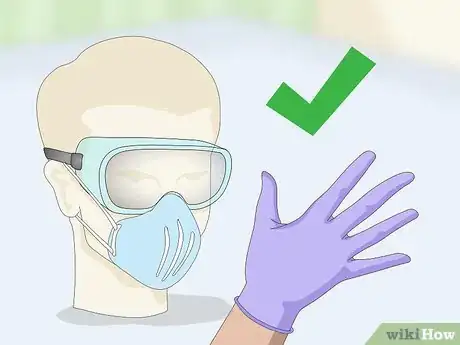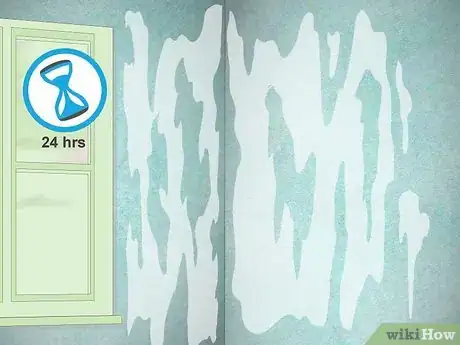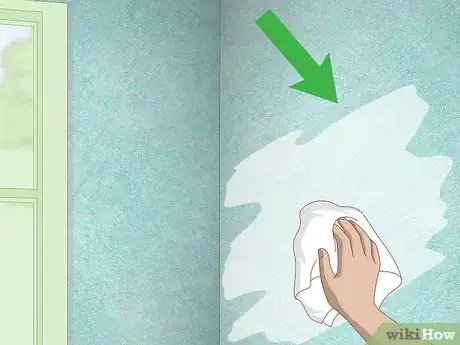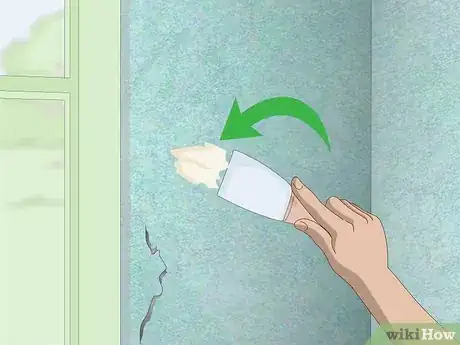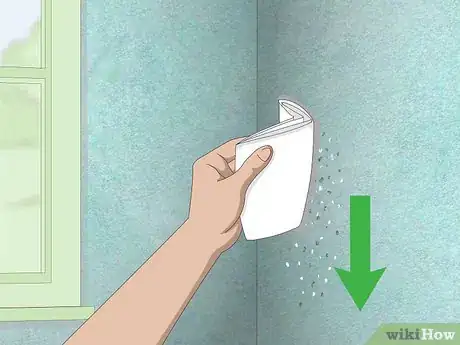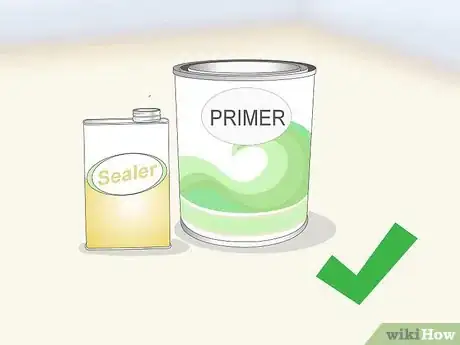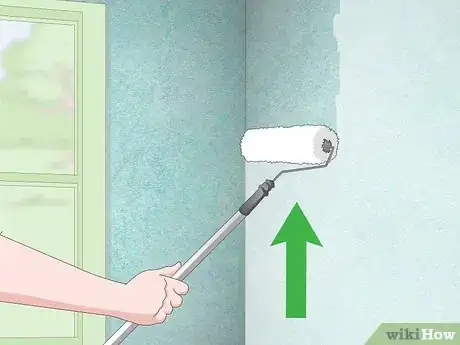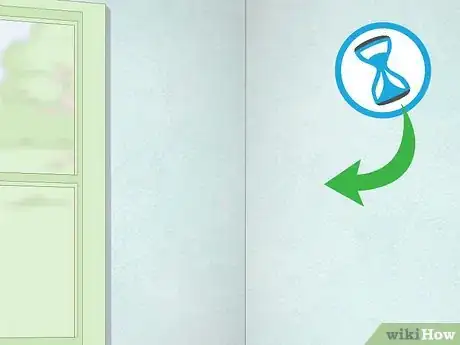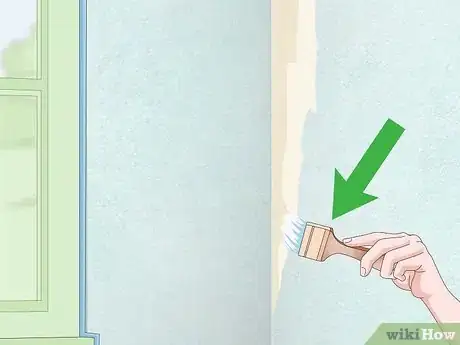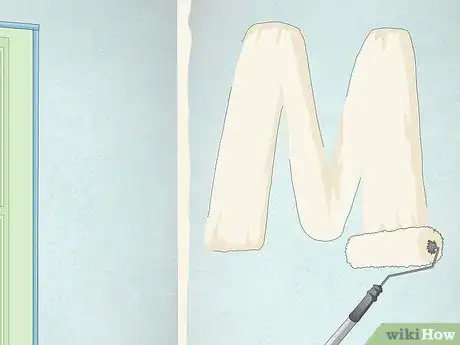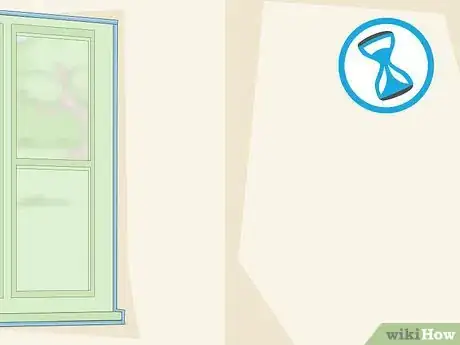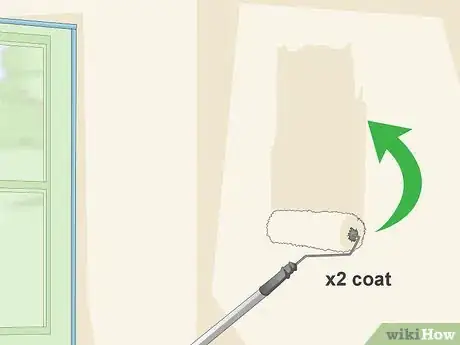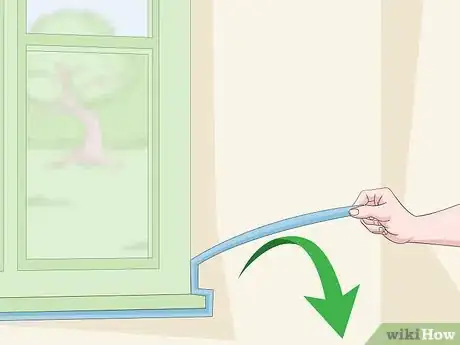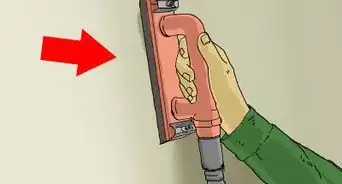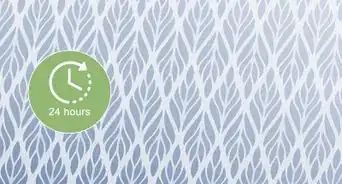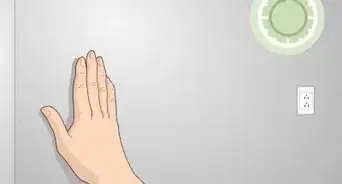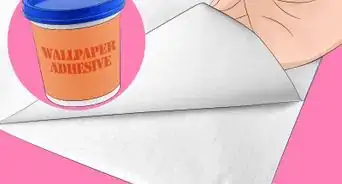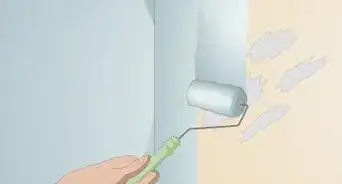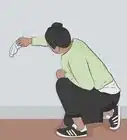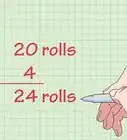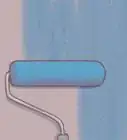This article was co-authored by Andres Matheu. Andres Matheu is the Owner of Hömm Certified Painting Systems, an Interior and Exterior Residential painting business based in the Washington, DC Metro area. Andres specializes in interior and exterior residential painting, color consultations, cabinet refinishing, wallpaper removal, and epoxy flooring among other services. An EPA Lead-safe Certified Firm, Hömm Certified Painting Systems has been awarded the Best of Houzz 2019 Service, Angie's List Super Service Award 2019, and Northern Virginia Magazine's 2018 Best Home Experts (painters) award.
wikiHow marks an article as reader-approved once it receives enough positive feedback. This article received 24 testimonials and 100% of readers who voted found it helpful, earning it our reader-approved status.
This article has been viewed 823,648 times.
Professional painters and home remodelers will suggest that the best option for painting a wall is to first remove any wallpaper from the surface. However, wallpaper with a strong adhesive can be hard to remove. Painting over the wallpaper may be the better option under these circumstances. If you decide to paint over wallpaper, clean the wallpaper first and then apply primer and sealer. You'll then be free to paint over the wallpaper with your chosen paint.
Steps
Cleaning and Prepping the Wallpaper
-
1Practice basic safety. You'll be working with chemicals when you clean a wall. To protect yourself, wear a mask or ventilator, safety goggles, old clothing, and thick gloves. You should also open doors and windows to keep the room ventilated.
-
2Clean the entire surface thoroughly with TSP. TSP stands for trisodium phosphate and is a cleaning agent that can effectively remove unwanted oils and chemicals from wallpaper, leaving a clean surface to paint on. Mix a half cup of TSP in two gallons of water. Wipe down your walls with the cleaning solution using a soft sponge or paintbrush.[1]
- You can buy TSP at a hardware store or paint store.
Advertisement -
3Let the TSP dry. It's important TSP dries completely before you proceed to the next steps.[2] Drying times will vary depending on how much TSP you used and the temperature of your home. It's a good idea to wait at least 24 hours to let the TSP dry.
-
4Rinse the wallpaper. Once the wall is fully dry, wipe down the wall with a clean, wet rag. Keep wiping until all traces of TSP are removed.[3]
- The rag you use should be wet, but not soaking. If you use too much water, you could damage your walls or wallpaper.
- Let the wall dry before proceeding.
-
5Cover the seams with joint compound. Unless you don’t mind the wallpaper seams showing through your new paint, you’ll need to cover them. Use a drywall knife to apply joint compound over the seams in a thin layer. Allow it to dry before sanding it down.[4]
- You can find drywall knives and joint compound at your local hardware store.
-
6Repair damage with spackle and adhesive. Spackle and adhesive can be purchased at most hardware stores. Scan the wallpaper for holes and any places where the wallpaper is peeling. Seal the holes by filling them in with a layer of spackle and rub a layer of adhesive over peeling wallpaper to keep it in place.
- Use the tools that come with the spackle and adhesive to apply them to the wallpaper.
-
7Sand any rough areas. Primer and paint attach better to sanded areas. Run sanding blocks gently over the full surface of the wallpaper. Pay particular attention to areas like seams you applied joint compound to, areas you spackled, and any rougher patches of wallpaper.[5]
-
8Remove any lingering dust. Wipe off all dust with a cloth after final sanding. Dust and grit will harm the final look of the wall if too much is left while painting.
Applying Sealer and Primer
-
1Opt for an oil-based combination primer/sealer. A combination primer and sealer can be purchased at a hardware store. The combination primer/sealer prevents the wallpaper from peeling and also creates a surface that paint will stick to easily. When painting over wallpaper, go for an oil-based, rather than a water-based, primer/sealer.[6]
-
2Apply the primer/sealer to the wall. Use a paint brush or paint roller to add a layer of primer/sealer to your wallpaper. Apply it the same way you would apply paint, and make sure to get into corners, nooks, and crannies. One even coat should be enough.[7]
-
3Give the wall plenty of time to dry. You should not paint the wall until the primer is dry. Drying times will vary depending on the type of primer/sealer you used. You should be able to find an estimated drying time somewhere on the package. Some primer/sealers may take a few days to dry.[8]
Applying Your Paint
-
1Mask areas where you do not want to paint. Protect baseboards and window trims with masking or painter's tape before you start painting. Make sure that no spaces exist in these areas, as paint may bleed through, covering unwanted edges and corners.
-
2Get into corners with a smaller brush. Take a smaller, preferably angled brush to get into hard-to-reach areas first. Target areas like the corners, near the windows, and along the baseboards.[9]
-
3Apply the paint using an "M" pattern. Use a paint roller to roll on paint in the shape of an "M." Then, make another "M" that overlaps the first. Continue this pattern of painting in "M" shapes until the wall is fully coated in paint.
-
4Let the first coat dry. Paint may take up to a few days to dry. You should let it dry completely before applying a second coat. Your paint can usually indicates an approximate drying time.
-
5Apply another coat, if needed. Usually, applying two coats of paint yields the best results.[10] If your paint is not as dark as you want, or if some wallpaper can be seen through the paint, apply a second coat.
-
6Remove the painter's tape from the wall and inspect your work. Once the paint is dry, peel off the painter's tape. If you notice any patchy areas, or if you missed any spots, you can spot treat these with additional paint.
Expert Q&A
Did you know you can get premium answers for this article?
Unlock premium answers by supporting wikiHow
-
QuestionIs Kilz okay to use as primer on wallpaper?
 Mark SpelmanMark Spelman is a General Contractor based in Austin, Texas. With over 30 years of construction experience, Mark specializes in constructing interiors, project management, and project estimation. He has been a construction professional since 1987.
Mark SpelmanMark Spelman is a General Contractor based in Austin, Texas. With over 30 years of construction experience, Mark specializes in constructing interiors, project management, and project estimation. He has been a construction professional since 1987.
Construction Professional
-
QuestionI peeled off the wallpaper down to the bare wall in my older house. The wall is not sheet rock, but is a very porous surface. Do I wash off any residue or can I prime right over the surface?
 Mark SpelmanMark Spelman is a General Contractor based in Austin, Texas. With over 30 years of construction experience, Mark specializes in constructing interiors, project management, and project estimation. He has been a construction professional since 1987.
Mark SpelmanMark Spelman is a General Contractor based in Austin, Texas. With over 30 years of construction experience, Mark specializes in constructing interiors, project management, and project estimation. He has been a construction professional since 1987.
Construction Professional
-
QuestionHow do I prepare wallpaper for painting?
 Andres MatheuAndres Matheu is the Owner of Hömm Certified Painting Systems, an Interior and Exterior Residential painting business based in the Washington, DC Metro area. Andres specializes in interior and exterior residential painting, color consultations, cabinet refinishing, wallpaper removal, and epoxy flooring among other services. An EPA Lead-safe Certified Firm, Hömm Certified Painting Systems has been awarded the Best of Houzz 2019 Service, Angie's List Super Service Award 2019, and Northern Virginia Magazine's 2018 Best Home Experts (painters) award.
Andres MatheuAndres Matheu is the Owner of Hömm Certified Painting Systems, an Interior and Exterior Residential painting business based in the Washington, DC Metro area. Andres specializes in interior and exterior residential painting, color consultations, cabinet refinishing, wallpaper removal, and epoxy flooring among other services. An EPA Lead-safe Certified Firm, Hömm Certified Painting Systems has been awarded the Best of Houzz 2019 Service, Angie's List Super Service Award 2019, and Northern Virginia Magazine's 2018 Best Home Experts (painters) award.
Commercial Painter
Warnings
- Some wallpaper may be too brittle for painting and can peel away when painted. Test a small area of your wall and check the results before painting the entire piece.⧼thumbs_response⧽
Things You'll Need
- Mask or ventilator
- Safety goggles
- Gloves
- Trisodium phosphate (TSP)
- Rags/cloths
- Joint compound
- Drywall knife
- Spackle
- Adhesive/wallpaper paste
- Sandpaper/sanding blocks
- Primer/sealer combination (oil-based)
- Masking tape
- Paintbrushes
- Paint roller
- Interior wall paint
References
- ↑ https://www.bobvila.com/articles/how-to-paint-over-wallpaper/
- ↑ https://www.bobvila.com/articles/how-to-paint-over-wallpaper/
- ↑ https://www.bobvila.com/articles/how-to-paint-over-wallpaper/
- ↑ http://www.planitdiy.com/inspiration/in-decor/paint-over-your-wallpaper-once-and-for-all-with-these-6-easy-steps/
- ↑ http://mycolortopia.com/blog/how-to-paint/pro-tip-painting-wallpaper#4YB0wq5G5Zfy0AhF.97
- ↑ https://www.bobvila.com/articles/how-to-paint-over-wallpaper/
- ↑ https://www.bobvila.com/articles/how-to-paint-over-wallpaper/
- ↑ https://www.bobvila.com/articles/how-to-paint-over-wallpaper/
- ↑ http://mycolortopia.com/blog/how-to-paint/pro-tip-painting-wallpaper#4YB0wq5G5Zfy0AhF.97
- ↑ Andres Matheu. Commercial Painter. Expert Interview. 28 July 2020.
About This Article
To paint over wallpaper, start by cleaning the wallpaper with trisodium phosphate, which will remove any oils and chemicals on the wallpaper so it's easier to paint over. Then, cover any seams in the wallpaper with joint compound so they don't show through the paint. Once the walls are ready, apply an oil-based primer and sealer to help the paint adhere to the wallpaper. Finally, apply your paint to the walls using a roller and paint brush. To learn how to fix damaged wallpaper before you paint over it, scroll down!
